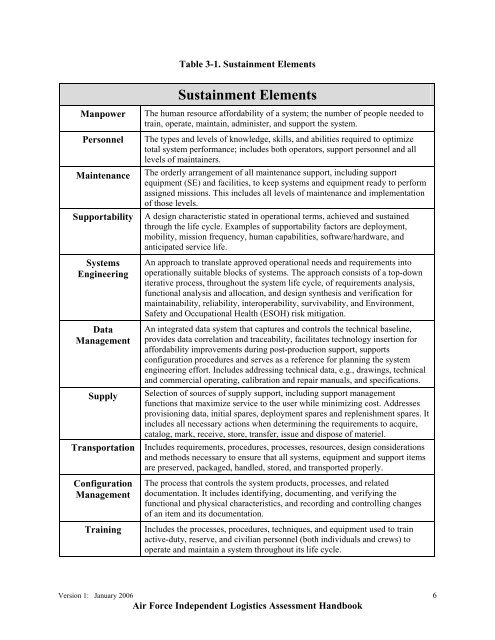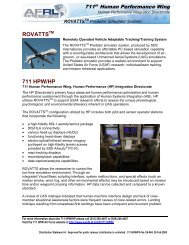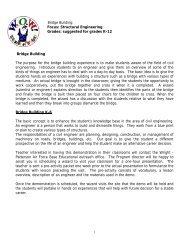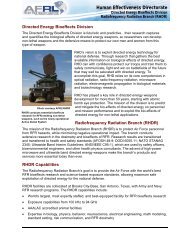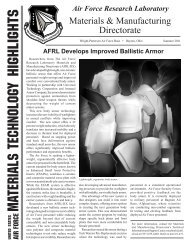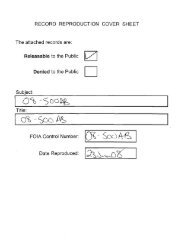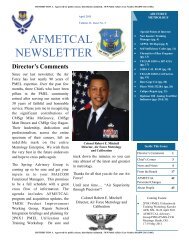USAF ILA Handbook - ACC Practice Center - Defense Acquisition ...
USAF ILA Handbook - ACC Practice Center - Defense Acquisition ...
USAF ILA Handbook - ACC Practice Center - Defense Acquisition ...
Create successful ePaper yourself
Turn your PDF publications into a flip-book with our unique Google optimized e-Paper software.
Table 3-1. Sustainment Elements<br />
Sustainment Elements<br />
Manpower<br />
Personnel<br />
Maintenance<br />
Supportability<br />
Systems<br />
Engineering<br />
The human resource affordability of a system; the number of people needed to<br />
train, operate, maintain, administer, and support the system.<br />
The types and levels of knowledge, skills, and abilities required to optimize<br />
total system performance; includes both operators, support personnel and all<br />
levels of maintainers.<br />
The orderly arrangement of all maintenance support, including support<br />
equipment (SE) and facilities, to keep systems and equipment ready to perform<br />
assigned missions. This includes all levels of maintenance and implementation<br />
of those levels.<br />
A design characteristic stated in operational terms, achieved and sustained<br />
through the life cycle. Examples of supportability factors are deployment,<br />
mobility, mission frequency, human capabilities, software/hardware, and<br />
anticipated service life.<br />
An approach to translate approved operational needs and requirements into<br />
operationally suitable blocks of systems. The approach consists of a top-down<br />
iterative process, throughout the system life cycle, of requirements analysis,<br />
functional analysis and allocation, and design synthesis and verification for<br />
maintainability, reliability, interoperability, survivability, and Environment,<br />
Safety and Occupational Health (ESOH) risk mitigation.<br />
Data<br />
Management<br />
Supply<br />
An integrated data system that captures and controls the technical baseline,<br />
provides data correlation and traceability, facilitates technology insertion for<br />
affordability improvements during post-production support, supports<br />
configuration procedures and serves as a reference for planning the system<br />
engineering effort. Includes addressing technical data, e.g., drawings, technical<br />
and commercial operating, calibration and repair manuals, and specifications.<br />
Selection of sources of supply support, including support management<br />
functions that maximize service to the user while minimizing cost. Addresses<br />
provisioning data, initial spares, deployment spares and replenishment spares. It<br />
includes all necessary actions when determining the requirements to acquire,<br />
catalog, mark, receive, store, transfer, issue and dispose of materiel.<br />
Transportation Includes requirements, procedures, processes, resources, design considerations<br />
and methods necessary to ensure that all systems, equipment and support items<br />
are preserved, packaged, handled, stored, and transported properly.<br />
Configuration<br />
Management<br />
Training<br />
The process that controls the system products, processes, and related<br />
documentation. It includes identifying, documenting, and verifying the<br />
functional and physical characteristics, and recording and controlling changes<br />
of an item and its documentation.<br />
Includes the processes, procedures, techniques, and equipment used to train<br />
active-duty, reserve, and civilian personnel (both individuals and crews) to<br />
operate and maintain a system throughout its life cycle.<br />
Version 1: January 2006 6<br />
Air Force Independent Logistics Assessment <strong>Handbook</strong>


